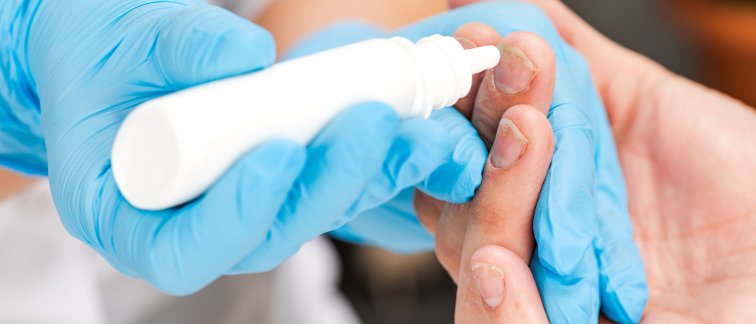Getting your nails done at a nail salon. A popular activity that quite a number of women do on a regular basis. Yet the substance used for the nails turns out not to be harmless. You can get severe, allergic reactions to it, dermatologists say. Nail technicians are often unaware of this.
The substances to which people are allergic are called acrylates. These substances form the basis of acrylic nails, for example, but are also used in dental fillings or when someone is fitted with an artificial knee. So an allergy to the substance can have quite far-reaching consequences.
That the allergy emerges primarily among acrylic nail enthusiasts was shown in a U.S. study two years ago. That study showed that 67 percent of acrylic allergies arose within the nail industry. In slightly more than half of those cases, it was the nail technician herself; in the others, it was the client.
Permanent allergy
Those symptoms can vary considerably. From itching to red fingers or cheeks and from eczema complaints to breathing problems. According to Professor Rustemeyer, Professor of Dermato-Allergology and Occupational Dermatology at Amsterdam UMC, it is clear that there is a link between artificial nails and allergy.
"But it does vary a lot from person to person how allergic someone is," Professor Rustemeyer says. "Some people can work or have nails done without any complaints. Others get an allergic reaction at the slightest touch with the substance. Then again, gel nails are better than acrylic, but you can get complaints even with that."
According to the Professor of Dermato-Allergology and Occupational Dermatology, the allergy is permanent. "Once we have established that you are allergic to acrylates, we also know that it cannot be cured. Your immune system does not forget something like that, if you come in contact with the substance again at a later moment in time the allergy can come back and you get symptoms. However, if you break contact with the substance, you can live symptom free."
Developing over time
Someone who knows all about this is Charity Smit, a nail technician whom has worked for years with all kinds of substances containing acrylates without any problems. Until everything changed last summer: "It developed after my pregnancy, probably because my hormones changed so much then. It started with a tiny blister and went from itching to irritation to blisters and burns. The doctor had no idea what caused it."
Smit was still setting acrylic nails on clients at the time of the complaints. During her vacation, the complaints diminished. Later, when she resumed her work, the symptoms worsened. The skin on her fingertips seemed to be loosening slowly and her fingertips became numb. Visiting a dermatologist made it clear: She is allergic to acrylates.
"Now what?", Smit wondered at the time. "I have my own salon, so just quitting wasn't really an option. At the beginning of this year I stopped using acrylics; I now use other products. Still, I did have another allergic reaction in the meantime. I am now trying to work more precisely and have learned more about the different products. When I did my nail technician training, it was not discussed at all. While acrylates are present in so many products."
Annebelle Nooteboom, editor-in-chief of magazine Nailed It recognizes Charity's story. With her magazine she tries to provide nail technicians with more knowledge about the profession, like acrylate allergy. According to Nooteboom and Professor Rustemeyer, the symptoms only increase over time. "That could have several causes," Nooteboom believes. "Such as that nails are increasingly popular. But whether that is the real reason is hard to say. The more often the substance comes in contact with the skin, the more you build up the allergy. The greater the exposure, the greater the risk."
High-risk occupation
Nail technician is not a recognized profession, you do not have to take special training for it. According to Nooteboom, this is strange: "Sometimes nail stylists do not work carefully, some work without gloves, for example. There are many risks in the profession, it is remarkable that stylists are not always well informed about this and that it is not a protected profession."
For clients, in addition, there is a great risk in not letting the artificial nail harden properly, Nooteboom knows. "If that is the case, then the allergenic substance actually comes into continuous contact with the skin via the nail. In addition, not every nail salon uses products that comply with legislation. If those products contain higher concentrations of allergenic products in terms of composition, you can imagine that the risk is also higher."
Source: read the original (Dutch) RTLnieuws article here.
Read our previously published research on allergies here:
Personalized Medicine for Severe Allergic Diseases (November 2022)
PERMEABLE: Personalized Medicine for allergy patients across Europe (December 2022)

